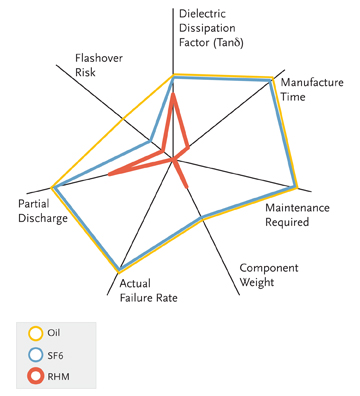Current Transformers are primarily used to provide isolation between the main high voltage primary circuit and the secondary control and metering devices. This isolation is achieved by magnetically coupling the two circuits. The two main uses of Current Transformers are metering of current in a high voltage line and sensing faulty power conditions so as to trigger the relevant protection systems.
As such, they are strategic components of the High Voltage Grid. Failure, in any form, can be very damaging and very expensive.
Our Current Transformers are based on a U-shaped bushing design that incorporates HV DryShield® insulation on the primary circuit. Their totally dry, rugged and simple construction provides reliable metering and protection performance up to 600 kV and 5000A (8000A under specific conditions) without any risk of explosion or toxic leakage.
More specifically, the benefits for our customers are:
| No risk of explosion - protect your people and equipment |
| Raise reliability level in the grid – reduces downtime risks |
| No risk of toxic leakage - environmentally friendly |
| Genuinely maintenance free - very low operational cost |
| Lighter than conventional technologies - more versatile |
| Metering accuracy class: 0.2, 0.2S, 0.5, 0.5S |
| Protection accuracy class: 5P, 10P, TPY (other classes on demand) |
| Up to 10 secondary windings |
| Up to 8000 A for specific conditions |
The core advantage of HV DryShield® is to set and sustain a low and steady dielectric dissipation factor (tan?) while maintaining a very low partial discharge (PD) level during field operation.
Technical and economic benefits when compared to conventional Oil or SF6 insulated technologies can be qualitatively summarized as follows:

Links to our transformers:
- LRGBJ Series – our single core CT up to 250 kV
- LRGBJ ZH Cascade Series – our “double decker” HV DryShield®_Cascade design for safe EHV and UHV applications
- LRGBJ – ZHD Series – for very high current applications
- GDGL Optical/Electronic Series – Ready for Smart Grid developments
- Shunt Capacitor Bank Applications – When accuracy at very low current ratios matters
